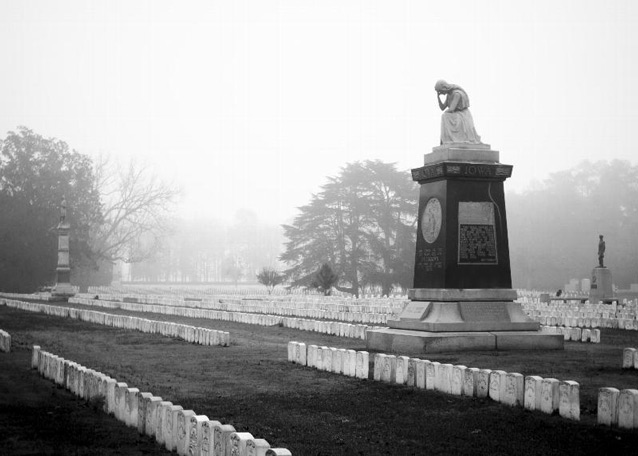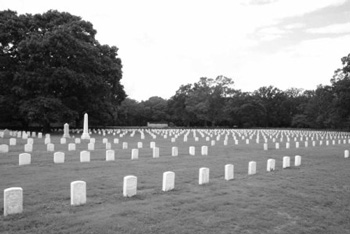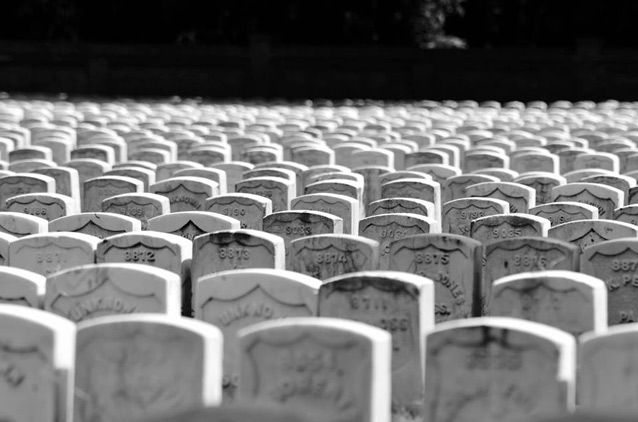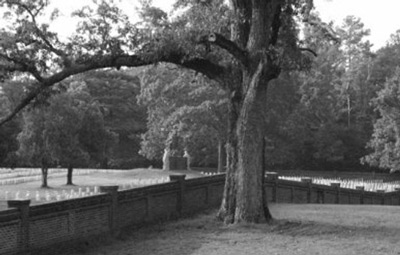The Andersonville National Cemetery landscape, located within Andersonville National Historic Site, is significant for its distinctive commemorative design, its association with the Civil War, and connection to important historical individuals like Clara Barton. The overall site was created to provide an understanding of the Prisoner of War story in the Civil War and to commemorate the sacrifice of Americans who lost their lives in these places.
When author Albert Webster and his wife visited Andersonville in 1873, he remarked upon features of the landscape. Copses of thick-leaved trees speckled the area, and "their fresh, dark shadows give rich variety to the strange landscape." In "A Jaunt in the South," Appleton's Journal Vol. 10, No. 234, Sept. 13, 1873.

NPS/C. Barr

NPS
The Andersonville National Cemetery was established on July 26, 1865, to formally preserve the place of burial for Union soldiers who perished at the Camp Sumter military prison (Andersonville) and continues to provide a permanent resting place of honor for deceased veterans. The cemetery is a 27.15 acre site located in the north central area of the Andersonville National Historic Site, northwest of the prison site.
A public entrance from a two way road leads from the prison site to the cemetery. Within the cemetery, two axial roads bisect the landscape into four quadrants, which together contain eighteen sections with burials or open space for future burials. The cemetery landscape displays a formal geometry with two orthogonal axes terminating in structures, entrance gates, and circular paved loops.
Andersonville National Historic Site is significant as the site of Camp Sumter (also known as Andersonville Prison), where 45,000 Union soldiers were imprisoned and nearly 13,000 died of disease and starvation between February 1864 and May 1865. The prison site represents events of this period of the war and the lives of those who lived and died there, as illustrated by the remains of earthworks constructed to guard and defend the prison and sites of prisoner excavated wells and escape tunnels within the prison boundaries.
The site is also significant as a place of commemoration of the suffering and deaths of the Union prisoners held at Andersonville. This begins with the United States Army’s efforts in 1865 to mark all the graves in the cemetery followed by the establishment and development of the national cemetery, including the erection of monuments and memorials.

NPS/Andersonville National Historic Site
Andersonville National Historic Site was created to provide an understanding of the overall Prisoner of War story in the Civil War, to interpret the role of Prisoner of War camps in history and commemorate the sacrifice of Americans who lost their lives in such camps.

NPS
The National Cemetery, located 300 yards north of the prison site established in 1865, is an integral part of the significance of Andersonville Prison Site. Most of the 12,920 men who died at the prison camp are buried in the cemetery. The first burial took place on February 27, 1864, when Pvt. Adam Swarner was interred. Graves for both the Union prisoners and the Confederate guards were in three-foot wide trenches.
During much of the operation of Andersonville prison camp, Dorence Atwater, a prisoner from the 2nd New York Cavalry, kept the hospital register. Seeking to identify all of the prisoners in order to help their families and friends after the war, he carried with him a list of 12,636 deceased prisoners when he left Andersonville on February 2, 1865.
In July 1865, Clara Barton accompanied an Army expedition to identify and mark the graves of Union soldiers by using the register. Barton and Atwater accompanied Capt. James M. Moore of the U.S. Army and a crew of thirty-four men including two clerks, one foreman, twelve carpenters, twelve letterers, and seven laborers. The crew compared the numbers on wooden stakes marking graves with the names on the register, then lettered, painted, and positioned a wood tablet with name, company, regiment, and date of death, as well as the original number.
Also as part of the development of the national cemetery system in the 1870s, temporary wooden markers were replaced with permanent marble markers of a standard design. The markers at Andersonville National Cemetery were replaced circa 1877. The government also built masonry enclosing walls at national cemeteries; the brick wall at Andersonville was constructed in 1878–1879 under specifications developed by the Army.
Andersonville Prison Site and Cemetery constitutes a valuable historical resource of the Civil War period, representing a grim but significant aspect of the war.
Quick Facts
- Cultural Landscape Type: Historic Site
- National Register Significance Level: National
- National Register Significance Criteria: A,B,C,D
- Period of Significance: 1863-1941
Landscape Links
Last updated: December 31, 2020
